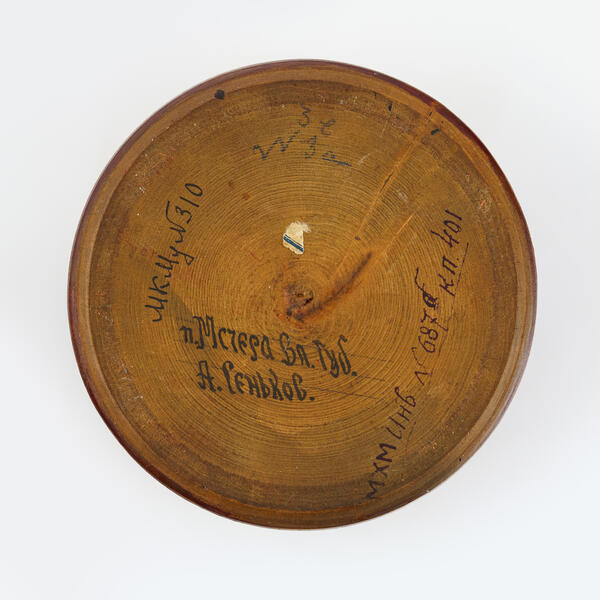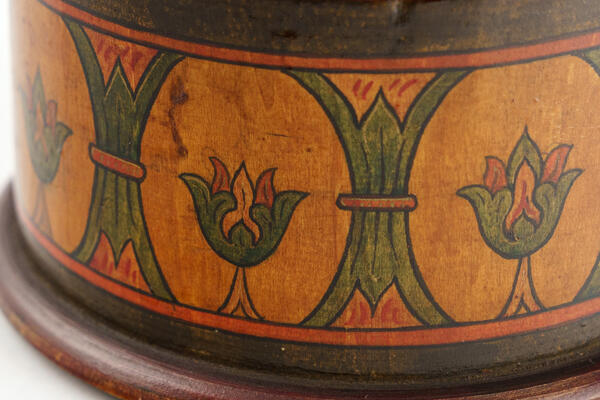The icon painter, restorer and miniaturist Alexander Semyonovich Senkov (1882–1953) was born in Mstyora. He worked in icon painting workshops of Mstyora and Moscow. Like many other icon painters, Alexander Senkov had to rethink his artistic path: at the beginning of the 20th century, Mstyora icon painting began to fall out of favor.
In the post-revolutionary years, when the traditional ideas about life and religion collapsed and new forms of life were being systematically introduced, icon painters began to look for other ways to apply their skills and centuries-old traditions. Artists were looking for new ways to organize the creative process itself. On June 23, 1923, former icon painters Alexander Nikolayevich Kulikov, Nikolay Prokofievich Klykov, Alexander Ivanovich Bryagin, Alexander Fyodorovich Kotyagin, Vasily Nikiforovich Ovchinnikov, Yevgeny Vasilyevich Yurin and Alexander Mikhailovich Merkuryev organized the artel “Ancient Russian Folk Painting”.
The craftsmen used traditional icon painting techniques to decorate wooden items. They worked with semi-finished products (blanks for painting), which were brought from the town of Semyonov, Nizhny Novgorod Governorate. For painting, the craftsmen used tempera. The resulting image was covered with a protective layer of drying oil. The artists received commissions for the manufacture of painted bratina pots (vessels for honey, beer or wine), ladles, low cabinets and matryoshkas for the All-Russian Agricultural Exhibition in Moscow. However, such products were not in great demand.
In search of ornamental motifs, the Mstyora masters turned to the ancient Russian book miniature. Gradually, their patterns became more diverse in elements and more elegant in execution. Pictorial motifs and plots were developed as well.
The salt shaker “Cockerel” is made of wood in the
form of a cylinder with a flat lid. On the lid of the salt shaker, the artist
depicted a rooster standing on elevated ground that resembles iconographic
hills. Alexander Senkov used to depict such hills — elements of the landscape
in canonical Orthodox iconography — in icons and transferred this familiar
element to miniature. The side surface of the salt shaker is filled with an
ornamental stripe of a repeating motif — a stylized flower in a light oval on
an ocherish-green background.





